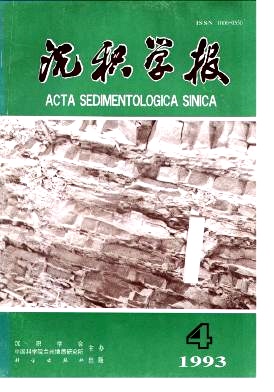Petrology and Sedimentary Environments of the Ordovician in Xiangfen, Shanxi Province
- Publish Date: 1993-12-10
Abstract: Ther are only Lower and Middle Ordovician in Xiangfen district. which are mainly composed of carbonate rocks and evaporites. The siliceous and clastic rocks are very little. The carbonate rocks include limestones and dolostones. According to origin and texture, carbonate rocks are divided into grain limestone, lime -mud limestone, finely crystalline limeston. dolomite - mottled limestone, gypsum - dissolved breccia limestone, mud - sued crystalline dolostone. mudy mud - slit --sized crystalline dolostone. finely - comsely crystalline dolostone. Detailed description and genetic analysis in the paper are made for the main rock types. Mud - silt - sized crystalline dolostone is commonly associated with gypsum. This dolomite resulted from supratidal (gypsum) dolomite flats or gypsum lagoons by peneconternporaneous evaporative pumping. Coarse - grained dolomite were mainly formed in post - ponecontemppraneous mixed waters and seepage reflux dolomitization. In Liangjiashan Formation of Lower Ordovician (O1) , siliceous rocks (chert) are found accompanying with post - penecontemporaneous dolostones. They occur as lumps, nodules and ribbons. The study shows they resulted from silicification, which was later than dolomitization. There are laminated, massive and brecciated gypsum, formed by evaporation and by dissolution. The stable isotope data indicates that the average δ18O value of carbonate rocks is -5. 832‰ (PDB), showing a great influence of meteoric waters on them. The average δ18C value is -1. 210‰ (PDB), varying in a narrow range. The Z value indicating paleosalinity is usually bigger than 120. It snows that most of carbonate rocks were deposited in marine environments, but influenced by meteoric waters. The Fe/Mn value of carbonate rocks varies from 22. 3 to 47. 3. Sr/Ba value varies from 0. 50 to 1. 21, but most of them are less than 1, showing a near- continental sedimentation and an intense meteoric water influence on the carbonate rocks. On the basis of the study of petrology and fades indicators, sedimentary environments of every formation (5 in all) are analysed. It shows that Xiangfen area in Ordovician experienced two wide -spread regressions (in the late Early Ordovician and late Middle Ordovician ) and a wide -spread transgression (in the early Middle Ordovician). The sedimentary environments were mainly supratidal flats (including gypsum lagoons), intertidal zones, subtidal restricted seas and open seas. The largest regression in late Middle Ordovician after Fengfeng Stage ended the marine sedimentary history of Xiangfen area in Ordovician.
| Citation: | Qiu Yansheng. Petrology and Sedimentary Environments of the Ordovician in Xiangfen, Shanxi Province[J]. Acta Sedimentologica Sinica, 1993, 11(4): 67-72. |






 DownLoad:
DownLoad: